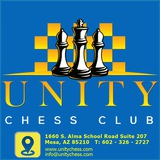20...c6 21.c5 Bc7 22.Bxg5! hxg5 23.Nxg5 Black cannot play ...Nf5 since after all trades on e8 white collects the f5-knight.
23...g6 24.Re6
Black is losing. There are several ideas to finish the game. One is to go h4 followed by h5 and the other one is to triple the heavy pieces along the e-file.
23...g6 24.Re6
Black is losing. There are several ideas to finish the game. One is to go h4 followed by h5 and the other one is to triple the heavy pieces along the e-file.
The isolated pawn becomes an asset. The bishop comes to c3 and in combination with the rook on e6, attacks the black king.
Unity Chess Club
Daniel Naroditsky Jennifer R Yu PRO League Prelim 2023 White to move
11.c4
Now you have to choose between 11...dxc4 and 11...Ndf6. Which one do you pick?
Now you have to choose between 11...dxc4 and 11...Ndf6. Which one do you pick?
This is a mistake. Black decides to enter in an isolated pawn position where White also enjoys the bishop pair.
11...dxc4! is the best option. 12.Bxc4 Qc7 White is naturally a bit better because of the bishop pair, but at least the structure is symmetrical, and Black is very solid.
White centralizes the queen, blocking the isolated pawn, using the fact that there is no black piece that can attack it.
The best move. Usually, when one is playing against an isolated pawn, it is a good idea to block it. In this case, the plan would be to block with a knight on d4. After ...Qxc5, Black increases control over the d4-square.
After 19...Nxc5 Black abandons the d4-square, and White would be slightly better.
There was nothing wrong capturing with the rook, but this is even stronger. With the knight coming to c4 White has to be slightly more careful.
Unity Chess Club
Anatoly Karpov Zoltan Ribli Amsterdam 1980 White to move
Black is suffering some pressure on the queenside and Karpov finds a plan to immobilize his opponent!
